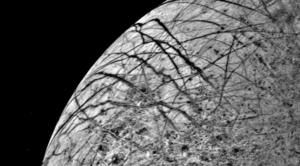In the late 1970s, Nasa’s two Voyager spacecraft flew by Jupiter’s moon Europa and found strong evidence that a global liquid water ocean lurks beneath the moon’s icy shell.
The liquid water ocean swirling against a rocky interior makes Europa a prime target in the search for extraterrestrial life, but its icy crust, perhaps as thick as 30 kilometers, has meant that ocean is likely frustratingly out of reach of future space missions.
But a new study published Tuesday in the journal Nature Communications suggests planetary scientists might find an alternative path to sampling the deep waters of Europa. Scientists have found a type ice ridge in the Greenland ice sheet on Earth that looks very similar to the many ridges stretching around Europa’s surface, and if the structures share a mechanism, it could mean water from the moon’s depths can be found — and maybe even accessed — at shallow depths within Europa’s ice.
Riley Culberg is a geophysicist studying Ice sheets and glaciers at Stanford University in California, but he works with an interdisciplinary team of researchers who often share their work with each. Still, when one of his colleagues was showing the team images of ridges crisscrossing Europa’s surface, he was taken by surprise.
“It’s like, ‘Wow, this looks exactly like this super weird thing that I saw in my data from Greenland the other day,’” Dr Culberg said.
What he had seen in Greenland was a “double ridge,” a nearly kilometer-long line of parallel ridges of ice, about two metres tall, separated by a trough about 50 meters-wide.
“If you sliced it in half and looked at the cross-section, it would be kind of like the capital letter ‘M’,” Dr Culberg said.
While the double ridge in Greenland is the only one of its kind found so far, Europa contains many such double ridges, albeit at a larger scale.
Read more: Independent
Ask me anything
Explore related questions





